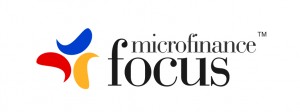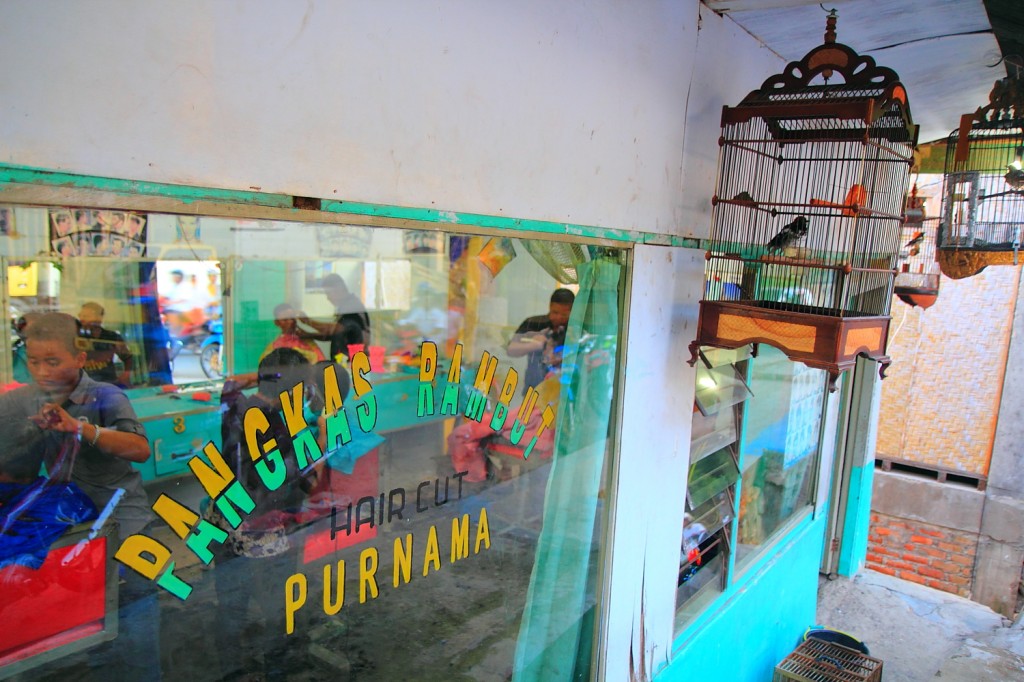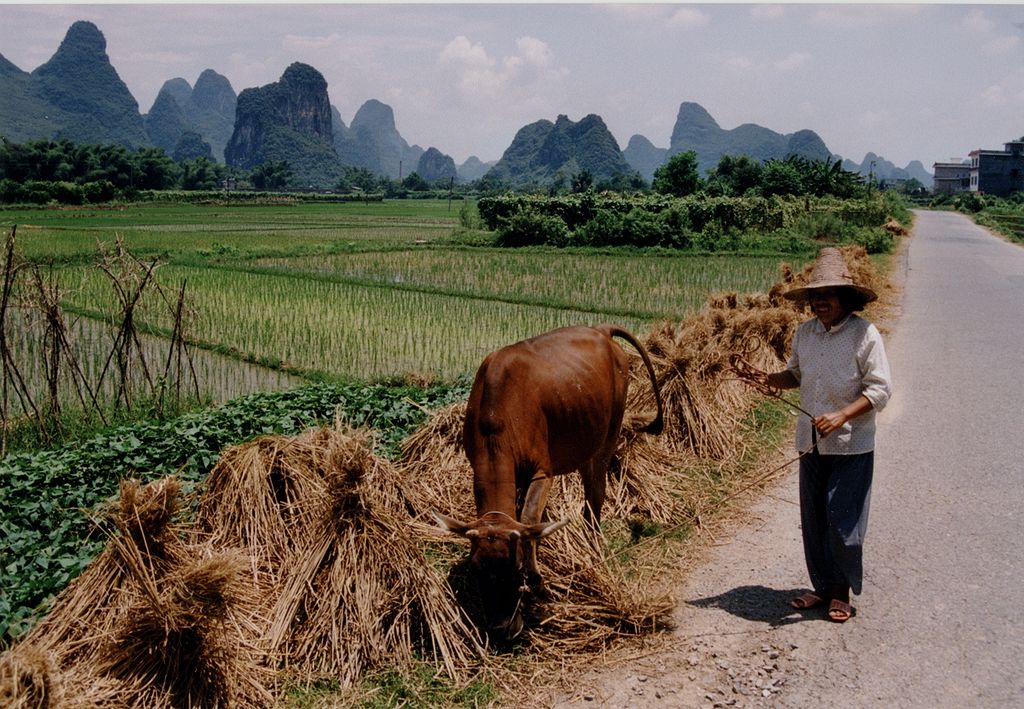Microfinance as a Catalyst for Industry and SME Growth
15:30 to 17:00 CST: Innovative microfinance products have led to great advances in agriculture, renewable energy, and the informal economy, and SMEs (small to medium enterprises) are acknowledged to play an important role in job creation that directly benefits the poor. How can micro-entrepreneurs best be transitioned into SMEs, and how can MFIs help these important players grow and prosper?
Moderator Mr. Jinchang Lai, Principal Operations Officer and Lead for Financial Infrastructure – Advisory Services – EAP, International Finance Corporation (IFC), World Bank Group, began the panel by reiterating why this topic is important, citing a recent USAID report about growing small businesses.
“The first sentence of the report said, and I quote, that ‘the notion that small businesses grow to be large is a fairy tale,”‘ said Mr. Lai. “According to IFC’s estimate, globally there are 420 to 510 million micro SMEs – but how many are formal SMEs? Only 35 to 45 million. Only about 8 percent of MSMEs globally are formal SMEs.”
However, said Mr. Lai, SMEs that do grow are more productive and create more jobs, creating a strong incentive to improve these figures. What has been the experience of financial services players in helping these small companies scale up, to the benefit of the entire economy?
First to speak was Mr. Chea Phalarin, CEO of Microfinance Institution Amret in Cambodia, who described how the institution moved up from micro-loans to SME loans over time. Amret was founded under the name of EMT by a French NGO in 1991, and received its MFI license in 2001 from Cambodia’s National Bank. It was renamed “Amret” in 2004, and in 2009 received the additional license of Microfinance Deposit-taking Institution (MDI) from the Central bank, allowing it to mobilize public savings. Most recently, Amret completely changed its core banking system MBWin to T24.
Amret’s credit products include solidarity credit and individual credit, which is conducted in the Cambodian Riel. These include SME loans, agriculture, bio-gas lending, and other products. Amret’s total outstanding loans are 257 million by the end of June, with 500 SME clients at this time, with 320,000 total clients. The MFI’s deposit products include “Happy” Accounts for liquid savings, Gold Accounst for goal-based savings, and Wealthy Accounts for management. $128 million USD is the current deposit balance.
In Cambodia, both banks and MFIs lend to the SME market, with MFI comprising a small number of SME clients. By June, Amret had around 500 SME clients. 20.23 percent of the Cambodian market in June 2014 was the penetration rate of potential clients by banks, while MFI had 2.60 percent, with Amret taking 0.13 percent. “There is still large potential for SME lending in Cambodia,” said Mr. Phalarin.
Why did Amret move from microlending to SME loans, which it begun in 2013? “We need to respond with the market in mind,” said Mr. Phalarin, who cited survival as one major factor in its choices. “Some of our clients have moved up… we need to respond to the movement of our clients who have moved from small loans to SME lending.”
Secondly, the loan product should help support economic development. Amret only engages in group lending and small individual loans. “It’s hard for development to depend on microloans,” said Mr. Phalarin, citing Cambodia’s lack of rice meal and other conversion industries for both local and export consumption. “We still depend on our neighboring companies, Vietnam and Thailand – we export raw material to these countries.”
What are the challenges of lending to SMEs? They include building staff capacity for this new sector, as well as strong competition, and SME clients who largely lack analyzable financial reports. In addition, SME activities are heavily reliant on external factors such as market consumption and natural disasters, while local SME products face competition from imported products in both pricing and quantity.
The impact of SMEs in Cambodia has been considerable, said Mr. Phalarin. Local SME products have reduced the nation’s reliance on imported goods, helping balance imports and exports. They have also absorbed considerable quantities of labor, reducing the unemployment rate and the incentives for Cambodians to leave the country (often illegally) to find work. SME activities help support micro-activities, as these small enterprises produce materials and products that SMEs are able to use.
Finally, SMEs have helped increase tax payments to Cambodia’s central government, and have helped to bring new technology and experiences to Cambodian citizens.
“Although a small percentage of our lending is in SMEs, we are still optimistic,” said Mr. Phalarin. “We have a large potential SME client base we haven’t touched yet, and we have good support from the government, especially from the Central Bank, as well as government policy.”
He praised the Cambodian government’s support of a free market policy and recent improvements in infrastructure from rural to urban areas, enhancing business conditions by improving roads, telecommunications, and other basic services – as well as its support of a Cambodian credit bureau, which helps reduce the risk of over-indebtedness.
Next to speak was Dr. Tianqi Sun, Deputy Director General, Financial Consumer Protection Bureau, People’s Bank of ChinaDeputy Director General, Financial Consumer Protection Bureau, People’s Bank of China.
“MSMEs themselves have inherent disadvantages which cause financing dilemmas,” said Mr. Sun, citing small size, ineffective management, products with low technology content, large fluctuations in earnings, unsound financial status, lack of credit ratings and credit records, and other issues. These factors make it hard for big banks to engage in pre-lending investigation and post-lending management.
Many MSME owners can get external reports “with any kind of conclusion they want, that costs them only 200 RMB,” said Dr. Sun – generating poor information that banks cannot make good decisions from.
Mr. Sun described his bureau’s database finding that MSME owners are usually short on financial knowledge and have little iniativie to do so, nor do they know to reach out for large banks for funds, until the government provides a platform. “Some MSMEs fail to make full use of basic financial products,” he said.
Financing costs in China continue to be driven up by several reasons: the profits of MSMEs are very low, while some banks adopt a one-size-fits-all stance to creditor access. Commercial banks are often afraid to make loans to MSMEs, as if a loan goes bad, bank employees may lose their jobs. Financial competition represents another complication.
How should the rights of small and micro enterprises be protected? Exploitation of these groups does take place: in some cases, small and micro enterprises could not get cash from the banks to pay migrant workers prior to a festival. Migrant workers typically need cash to go back to their rural homes. The seasonal pressure for MSMEs to provide one-time large amount of cash to their workers is very high before each major festival, Mr. Sun explained, as money transferred by the end of the quarter and could not be accessed at that time, said Mr. Sun.
In response to these issues, the Central Bank of China has committed 50 billion RMB to re-finance commercial banks to make loans to MSMEs. Local governments are mandated to make it easier for private capital to invest in the financial industry and to promote competition at the city and county level, said Mr. Sun. They are also encouraged to foster education to and ensure competition for MSMEs.
Regulators have established a consumer hotline, in which consumers and MSMEs can complain about abuses – covering nearly 800 million of China’s population, and soon will cover the entire country. Regulators also have set up systems to address disputes between business and consumers.
Next to speak was Mrs. Mary Jane, Perreras, President/CEO, CARD SME Bank, Philippines, who described her bank’s goal of being viewed as a world-class leader in microfinance and community-based social development undertakings, focusing particularly on women and families. CARD provides capacity building services that helps women and families “transform” their lives, eventually empowering them to take control of their own financial institutions. CARD also seeks partnerships with government and community organizations and associations.
Established in 1986, CARD has evolved into 13 different, mutually reinforcing institutions, including the CARD SME Bank, which gives both microfinance and SME services to its clients. Its services include IT services, life insurance, leasing services, health requirements, and much more. It is working to provide crop disruption and business disruption insurance services to its clients in a new joint venture.
Why did CARD decide to go into SME banking? “CARD would like to have a real focus on each operation,” said Mrs. Perreras, citing how many of her clients needs are shifting as the years go by. “They have gone to big commercial banks and unfortunately were not able to get the loans they need because of requirements they do not have. Many have very limited education, and cannot come up with their own financial system or financial statement.”
The SME Bank was created to address these needs, said Mrs. Perreras, noting that the SME Bank can give loans as high as 10 million pesos, or $232,000 US dollars. The bank also encourages risk-based or cash-flow based lending, giving its clients loans as high as 1 million without collateral, with special preference paid to former microfinance clients.
“CARD was formerly a rural bank,” said Mrs. Perreras, describing how CARD SME BANK, INC. operates as a profit thrift bank, albeit with the extraordinary objective of eradicating poverty. The bank does not have any consumer loans, focusing instead on graduating CARD clients, focusing on services and loan products related specifically to business.
The CARD MRI business model involves a shift from a CARD Inc. NGO to a CARD Rural Bank, as these clients now have additional services – allowing the organization and its clients to mobilize savings, which a NGO cannot do. Once these clients become “very disciplined and very mature,” they become Card SME clients, said Mrs. Perreras. “Next time, you may see there will be four levels,” she said, referring to a need to segmentize the poorest populations CARD serves.
For CARD NGO, the clients are the poor, said Mrs. Perreras, who reside in high poverty, rural, and hard to reach areas. Meanwhile, CARD Bank clients are moderately poor to poor, residing in rural and urban areas. CARD SME clients are moderately poor, and have graduated from CARD MRI and other non-CARD SMEs.
SME has three tiers of clients with a corresponding increase in the size of the loans available at each stage, with special consideration given to graduates. For SME I, “we give more weight to non-financial indicators,” said Mrs. Perreras, as they may not have records – although financial indicators are taken into account for SME 2 and SME 3.
Where is CARD SME now? For total SME loans disbursed in USD, CARD’s total was $8.6 million in June 2014, with the total SME loans outstanding at 6.4 million. The total number of active SME clients was 6,751, including “incubator” clients. Ninety percent of clients are women in, many of them rural.
Last to speak were Ms. Gaamaa Hishigsuren and Mr. Ricardo Martin Garcia Tafur, Financial Institutions Group, International Finance Corporation (IFC) World Bank Group, who described MFIs role in expanding financial access for SMEs.
Small firms have typically been ignored by main-stream institutions, said Ms. Hishigsuren, as they are viewed as too small and too much of a lending risk. Over 25 million small and very smell enterprises (VSEs) exist in developing countries, with more than 300 million informal MSMEs. Sixty-one percent and 49 percent are respectively unserved and underserved.
Small enterprises are at a larger disadvantage as they are relatively under-served, with more action at the lower and higher ends of the scale.
“Very small enterprises,” she said, are often defined by the number of employees, annual turnover, sales, and so on – while they are larger than micro-enterprises by this criteria, despite being more common. While their record taking is more sophisticated, they are still not as advanced as small to medium enterprises in this arena, and lack documentation and protection from market shocks, rendering it hard for them to get financing.
“Their financial needs are generally larger and more complex than micro-enterprises and generally exceed what MFIs can offer their micro-enterprise clients,” said Ms. Hishigsuren. Things may be changing: roughly 80 percent of MFIs around the world responded in a survey that they plan to increase their small enterprise portfolio and consider it part of their portfolio.
Moving from microclients to small enterprises requires some adaption in terms of staff capacities, risk assessment tools, and MIS, said Ms. Hishigsuren. Problems include poor or weak data analysis management, underpaid staff, and risk assessment that is not tailored to the sector.
Mr. Ricardo Martin Garcia Tafur next took the floor, describing key factors and critical areas for expanding these small and very small enterprises. What is the foundation for scaling up?
“There are several motivations for MFIs to enter the market,” said Mr. Tafur, describing the desire to retain clients whose circumstances have improved, strategic long-term moves, competition, and portfolio diversification, among other factors.
“In other cases, it’s very important for institutions to have a strategy… It’s important to assess readiness and have a good idea of the market,” he said. “The alignment between your front office and back office has to be very strong.”
MFIs must consider the importance of assessing the regulatory market before entering the SME sector, warned Mr. Tafur. In Latin America, he noted, some institutions are more proactive than others, while others grow organically with their clients to retain larger companies. MFIs should also know who their competitors are, which may include banks and larger MFIs, as is the case in Latin America.”Most important is understanding your value proposition,” he said.
Secondly, MFIs must understand their market well and engage in good product differentiation, which is key to the process of scaling up. These include larger loans, savings, transfer and payments services, and larger, longer-term loans. Competitive advantage for MFIs in the SME sector lies within providing non-financial services, said Mr. Tafur, including market linkages, knowledge sharing events/media, and training and consultancy. Mr. Tafur stressed the import of maintaining face to face relationships with clients as MFIs move into the SME space.
Processes and procedures must be adjusted to new segments in this transition, said Mr. Tafur, encompassing origination, underwriting, portfolio monitoring, and collection. Origination must still include word of mouth, graduating microclients, sales personnel, and other proactive work.
Finally, there is the matter of people, who “are the drivers of continuous success,” said Mr. Tafur. People help to drive a MFIs culture and help it become sustainable or maintain its status. Major elements include recruitment and upgrading, training/communications/culture, and incentives/performance monitoring, all of which work together to create a strong management team. Some Latin American institutions either assign a loan officer specifically to SMEs, or work in an integrated approach.
The panel was moderated by Mr. Jinchang Lai, Principal Operations Officer and Lead for Financial Infrastructure – Advisory Services – EAP, International Finance Corporation (IFC), World Bank Group.
Panelists were Mr. Chea Phalarin, CEO of Microfinance Institution Amret, Dr. Tianqi Sun, Deputy Director General, Financial Consumer Protection Bureau, People’s Bank of China, Mrs. Mary Jane, Perreras, President/CEO, CARD SME Bank, Philippines, and Ms. Gaamaa Hishigsuren and Mr. Ricardo Martin Garcia Tafur, Financial Institutions Group, International Finance Corporation (IFC) World Bank Group.
The session was facilitated by the International Finance Corporation (IFC).







